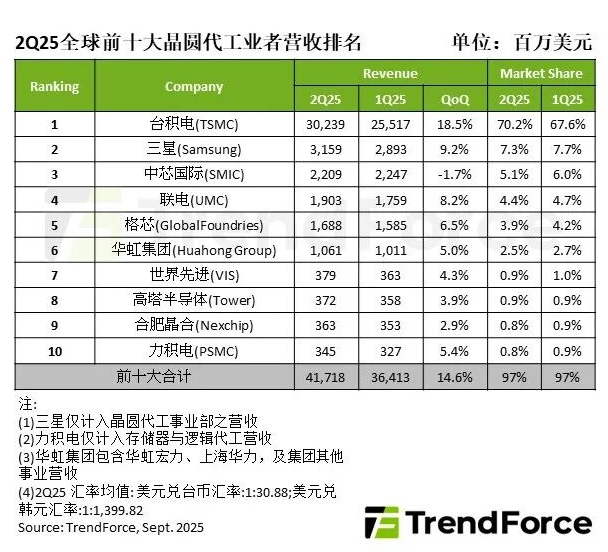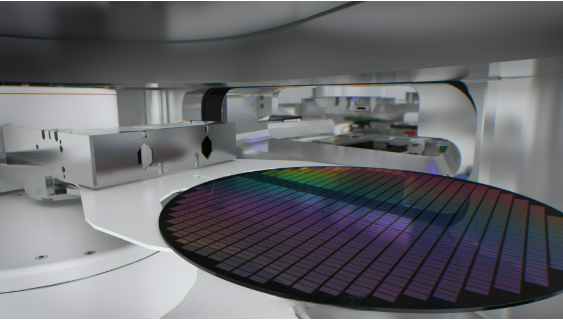Latest data from TrendForce shows that the top 10 global foundries generated $41.7 billion in revenue in Q2 2025, a 14.6% quarter-on-quarter (QoQ) surge and a new all-time high. This explosive growth is mainly driven by pre-stocking spurred by consumer subsidies in the Chinese mainland market, combined with rising demand for new smartphones, laptops/PCs, and servers in H2—boosting both industry-wide capacity utilization and shipment volumes.

Among leading players, TSMC dominates with absolute strength: Fueled by new device pre-stocking from major smartphone clients and expanded shipments of new laptop/PC and AI GPU platforms, its total wafer shipments and average selling price (ASP) grew in tandem. TSMC’s Q2 revenue reached $30.24 billion (18.5% QoQ), and its market share soared to 70.2% —a rare near-monopolistic level in the industry, solidifying its unshakable leading position.
Samsung, though ranking second, continues to widen its gap with TSMC. The company’s Q2 revenue was $3.159 billion, with market share dropping from 7.7% to 7.3% and a growth rate of 9.2%—significantly below the industry average.
Chinese mainland foundries showed mixed performance:
- SMIC (3rd place): Benefited from geopolitical shifts and pre-stocking orders driven by domestic subsidies, with wafer shipments up QoQ. However, delayed shipments and lower ASP led to a slight 1.7% QoQ revenue decline to $2.21 billion; its market share edged down to 5.1%, but its ranking remained stable.
- Hua Hong Group (6th place): Driven by domestic substitution and consumer subsidies, Hua Hong Grace’s capacity utilization hit 108.3%, and revenue from 65nm and more advanced processes rose 27.4% year-on-year (YoY). After merging with Shanghai Huali, the group’s revenue increased 5% QoQ to $1.06 billion, with a 2.5% market share.
- Hefei Jinghe (9th place): Leveraged consumer subsidy dividends and higher orders for peripheral ICs (tied to clients’ H2 new products) to offset low foundry prices, achieving nearly 3% QoQ revenue growth to $360 million.
TrendForce predicts that Q3 foundry growth will focus on seasonal demand for new products: Advanced processes will see orders for new main chips (driving revenue via high-priced wafers), while mature processes will benefit from peripheral IC orders. Industry-wide capacity utilization is expected to rise further, pushing revenue to grow QoQ.
The outstanding Q2 performance of the global foundry industry reflects a recovery in industrial chain demand. ICgoodFind will continue to track leading players’ dynamics and technological iterations to deliver key industry updates.

ICgoodFind:TSMC’s 70% market share in Q2 highlights the stark shift in the foundry landscape. We’ll keep monitoring how Chinese mainland players and Samsung adapt, and share insights on industry demand trends.




